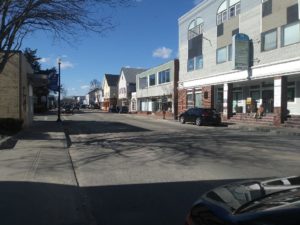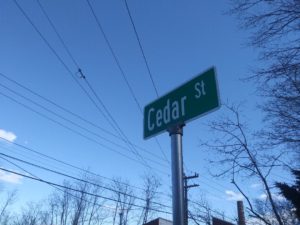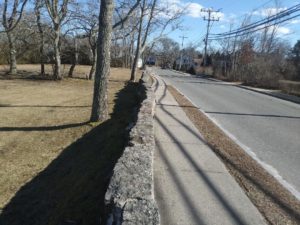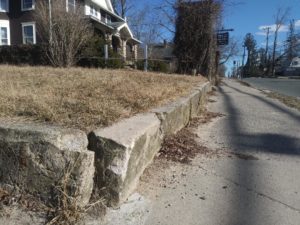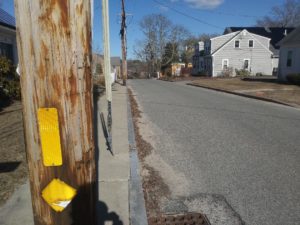Across from Park Street is Elm Street, the last one I’ll describe on this blog. The train tracks cross here. The Old Company Store is on the left, just past Fearing Tavern Museum. The old Tremont Nail Company buildings sit on the right, town property yet to be repurposed. Just past that is the bridge, closed down for repairs at the moment. The water on the left side of the bridge is several feet higher than on the right. There’s a ladder for fish to climb, bypassing the gates that dam the water. The remains of a water wheel are still attached to the nail factory, a symbol of power and the passage of time.
Elm street needs work. Its pavement is bumpy from years of frost heaves and patching; the sidewalk is narrow, cracked, and sandy. It looks and feels like a neglected space, well past its prime and not yet reclaimed for future purposes. Except for The Old Company Store.
Over fifteen years ago, two sisters bought what once was the company store for the nail factory. They kept the wood floors inside and the shingles outside. A ton of cleaning, dreaming, and great attention to detail later, this store is one of the most successful businesses in town. Food, music, books, housewares, gifts of all sorts, special events – you can find it all here. The owners and staff are friendly and knowledgeable, the prices are more than reasonable, and shoppers find things here that malls just don’t offer. They support local charities and happenings. In recent years, they repaired and bricked the sidewalk from the edge of the bridge to a bit past their parking area. There are tubs of flowers and decorations for holidays. The love they have for this town and their business is evident in everything they do and everything I see here. Without a doubt, Wareham is a better place because The Old Company Store lives here.
Elm Street is a walk into possibility and neglect. The life of a town can go either way, and usually does. The difference is often connected to dreams and hard work, and an ongoing trust that nothing is beyond redemption. That’s a lesson I need to learn over and over again.
Question: What lessons are found on the streets of your town?


